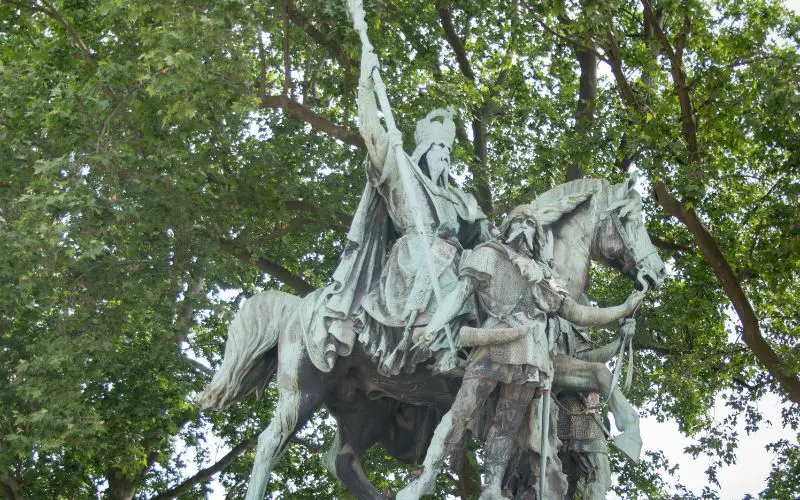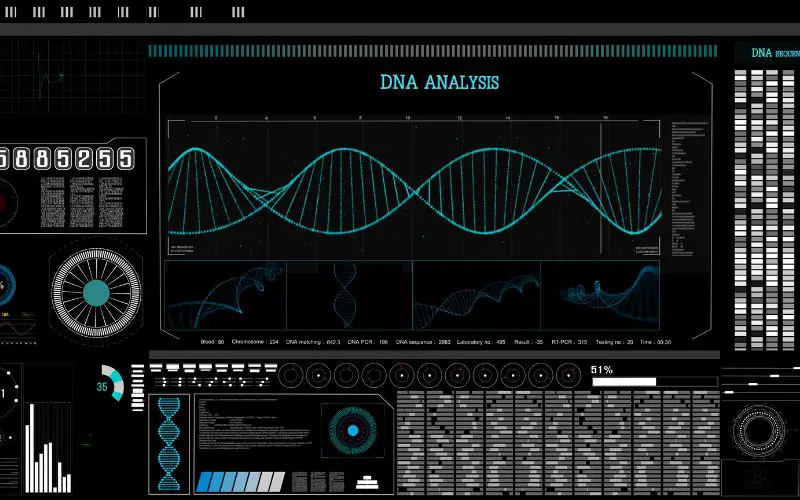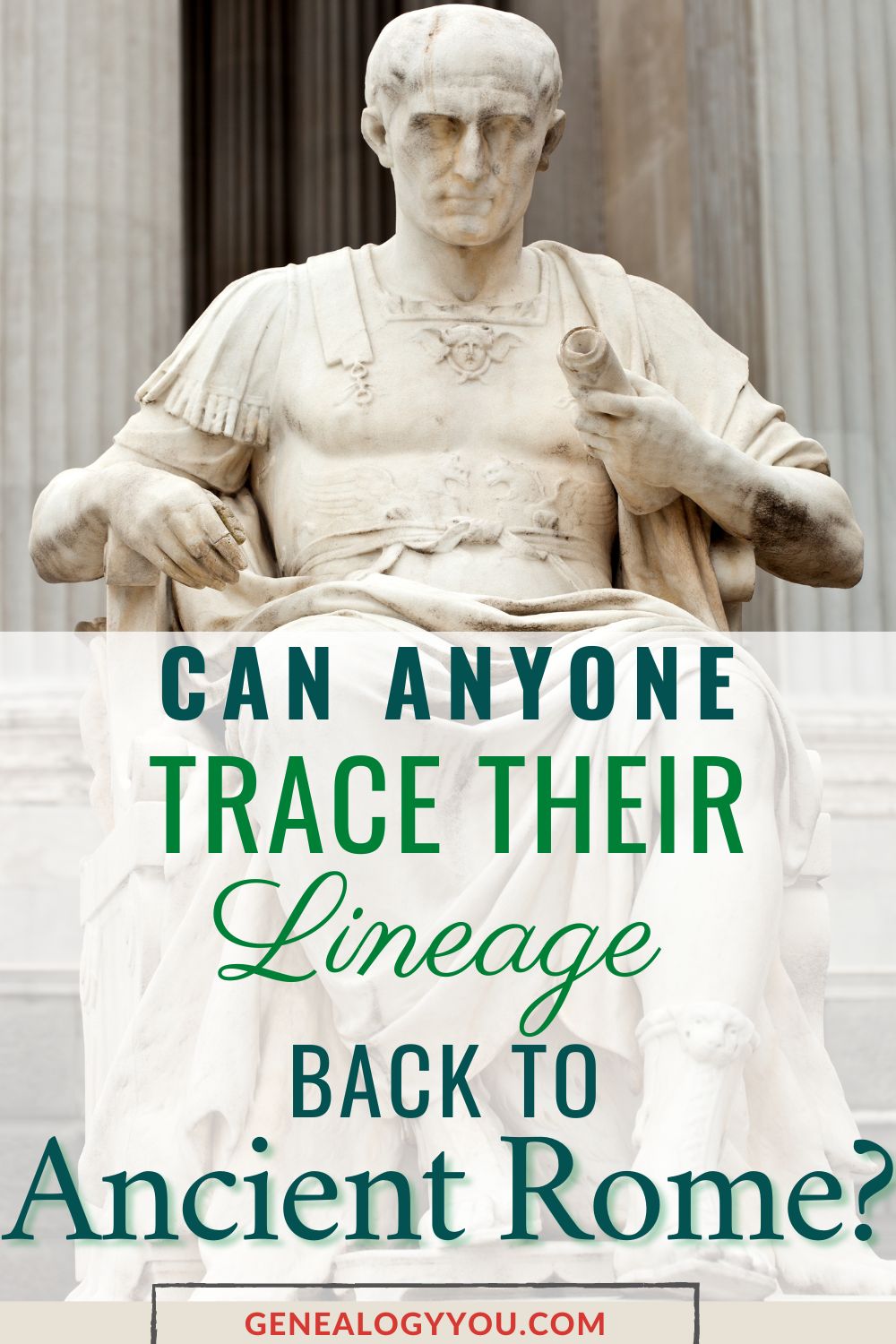Inside: We know lineage can be traced back a long way, but can anyone trace their lineage back to ancient Rome?
When going deep into a genealogy search, research can create some interesting results. Like Wikipedia, users can create their own entries on family tree sites.
This can be a great tool for those of us who have first-hand accounts about a relative that has no info listed.
Filling out a profile of a family member that once lived is a way to preserve their memory in genealogy for generations to come. There is even an option to include photos!

Most people looking into their family’s history are in a serious pursuit and find the service valuable. Others take it as an opportunity to be a jokester.
One such example is finding Zeus as a person to be descended from. Yes, the Greek god.
After a good chuckle, two fears come to mind. The first is, “Certainly, no one thinks he was a real person, right?”
Then, “Oh no, I wonder if this happens with regular people, too?”
Freedom at our Fingertips
Having the ability to connect the family lineage dots is empowering. Being able to trace back through generations and coming upon a historical record, no matter how mundane, is exciting.
We have the ability to do more today than ever throughout the course of human history. Our documents have never been more preserved and our details have never been more widely accessible.
Although that is an amazing power, it’s also highly susceptible to human error or shenanigans. Entries on individual people can be edited with the goal of having historically accurate information provided.
When it’s not, that can be tough to overcome. You want to be able to trust what you add to your family trees.
The only way to trust the facts provided is to do the research yourself.
Record Keeping

There are some real, notable people in history who can actually be traced by living descendants. One great example is Charlemagne who is said to have as many as one billion descendants.
The leader of the Holy Roman Empire lived over a millennium ago and yet here we are able to today trace descendants.
What about the further back? Is it possible that the records can go back a thousand years beyond Charlemagne, perhaps to Roman times?
Unfortunately, despite much effort from those collecting data, there is no accurately documented family line dating back to ancient Rome. If a common ancestor was able to be traced through family history and put onto family trees, no one has knowledge of it.
An Empire Spread Thin
Genetic genealogy is a way to put together a family tree using DNA results. It’s the most complete way to represent a family through the ages. It’s also quite a conclusive way to get to know family figures of the past.
Being able to trace ancestors from the Roman empire would be amazing, especially if you could tie DNA with the findings.
To be fair, Roman emperors used their military dominance to spread the empire far beyond the confines of literal Rome.
That means ancestors could be classified as part of the Roman empire and have lived as far east as Portugal, as far north as England, as far south as Egypt, and as far west as Turkey. That’s quite the family tree.
Centuries in the Making
They say Rome wasn’t built in a day. If that isn’t the understatement of a millennium, we don’t know what it would be.
All in all, it took about 800 years to build Rome into what we look back on today.
Tracing back to Julius Caesar or really anyone who lived in the territory back then would be quite a feat. Well, impossible for Julius, since Caesar wasn’t successfully able to father a child that produced what would have been a grandchild.
To his credit, he did have two children who grew to adulthood at their point in existence. Julia, his daughter, died in childbirth. The baby born to her was unable to secure footing in this world and passed away as well.
Ptolemy Caesar, his son with Cleopatra, was executed at 17. He was the last Pharoah when cultures collided and Rome took over his homeland of Egypt.
Oldest Family Tree
While tracing back to the Roman empire might be a bit of a stretch, it’s not impossible to have long centuries of lineage recorded. Relatives of the Kang clan could tell you all about it.
If you feel proud of yourself for being able to keep track of the most recent generations, get ready to have your mind blown. Anyone directly related to the Kangs can trace their tree back over 5,000 years ago.
For anyone counting, that’s 80 generations! Confucius is part of this clan.
Whoever it was with the idea of getting that serious about keeping track of everyone born and everyone to come was genius. They were also clearly respected by the family to keep that tradition alive.
Maybe if someone in Europe during the time period of the Roman emperors had been that serious with their genealogy all those years ago, we’d have a European descent family tree.
Lineage Across the World

You may be wondering what that could mean for your DNA. The results come with data that can be applied to a map. Looking far back, you can see the areas in which your ancestors came from.
So, what does that mean for time and a connection to Roman emperors or the plebeians who lived back then? If you can’t connect records and families back that far, is there any hope to see if you descended from Roman times?
Well, it depends on how you look at what’s available. Genealogy can direct us towards a country or part of the world, but not necessarily a time frame.
We can see the movement of people from an area and know generally where groups have moved over time. With DNA, we don’t know when mostly just where.
Interpreting Genetic Information
Theoretically, if you have DNA results that say Italy, it could link you through history to Roman times. A paper trace through records isn’t an option, but DNA may be able to tell the story of a lost culture through blood.
At the same time, if ancestors were born in France in the year 300, they would have been considered Roman. It will show up on your DNA map as France, but we don’t know when your father had ancestors in that area.
Technically, DNA only goes back about 200 years or eight generations. That doesn’t mean the genes aren’t connected to an ancient past.
Perhaps families from Europe came from many countries classified as Roman. Then, over time, they settled in one area for centuries.
It’s possible then that there’s the eastern Mediterranean, near east, or North Africa represented far back in the line.
Each ancestor would be hard to follow but they could have migrated from one generation to the next until they, too, settled in a place that’s showing up in your DNA results.
Natural Disasters

No one should forget natural disasters that took out percentages of the population. We all know about the black plague, which took out as much as half of Europe.
What about older disasters?
For example, the Minoans were wiped out by a catastrophic volcanic eruption in the near east. Entire civilizations have been almost erased from existence.
The very few people left to be an ancestor to anyone spread out. If you were to look into the DNA sample of someone who descended from them several generations in the future, Minoan might not show up at all.
There wouldn’t be anything to compare it to.
Lucky for Rome, most people who called themselves Roman weren’t actually in the city center. The population was so far and wide that perhaps most of everyone who is of European descent today is, in fact, from families of ancient Rome.
Adam and Eve
Passing along genes back in the day wasn’t easy. As civilization was getting started, most people died young in comparison with modern times and many children didn’t make it to puberty.
Essentially, family lines sort of died out pretty quickly. That was until they didn’t.
In theory, all men around today come from Y-chromosome Adam. In that same thread, there is a mitochondrial Eve.
She would have been the host of anyone who would have had mitochondrial genomes.
These two people from North Africa were once thought to have lived centuries apart. This was long before the geologic evidence shows migration patterns toward Europe and beyond.
Experts are seeing that now, it’s much more likely they lived around the same time.
Little did they know the power in their loins. Can you imagine the pressure of being the gene template for your sex and all that is to come?
You might feel lucky and full of hope or weighed down by the responsibility for each future generation.
The important thing to remember here is, unlike the biblical interpretation, Adam and Eve weren’t the only people alive to pass on their genetic makeup. There were other families throughout the population that existed.
It just so happened that these two individuals had the right stuff to last, for whatever reason.
Descent From King David
Speaking of the bible, some have wanted to know if they are related to important figures who we believe to have actually walked the earth. As mentioned, our DNA can only point us in a direction for the past couple of centuries.
There are some who believe that David might not have existed at all. It’s harder and harder to prove someone had a life as time goes on, particularly before records were kept.
Even if they were kept a millennia ago, that doesn’t mean they’d still exist today, no matter how much status a king enjoyed.
That’s a theme that many families can relate to when looking back on their ancestry. Many records aren’t accurate or don’t exist at all.
Heck, there was even a woman who debated the existence of the most well-known writer of our time, William Shakespeare. Now, they have to try and prove his existence.
Some historians have to fight with this reality on a daily basis. Imagine trying to connect the dots with someone who has never lived.
Everyone wants to be related to someone noteworthy in history, but genealogy can only go so far.
An Answer For Future Lineage
Maybe there’s hope that in the future techniques can point us in more specific directions and time frames. As DNA results go, the bigger the data sample is, the more we learn about what the info is telling us about the past.
It has taken so many years of discovery to learn as much as we do about historical figures and the lives they lived. Thanks to archaeologists and Egyptologists, we know so much about how early civilizations rose to power.
There’s still so much being uncovered in places around the globe. Entire palaces are being dug out that haven’t seen the light of day in two thousand years or more.
Getting an answer to so many questions about the past will probably come as technology and data pools advance.
Maybe one day, science will advance to the point of being able to trace individuals back to ancient emperors or fill in the gaps in what we know about genealogy.


